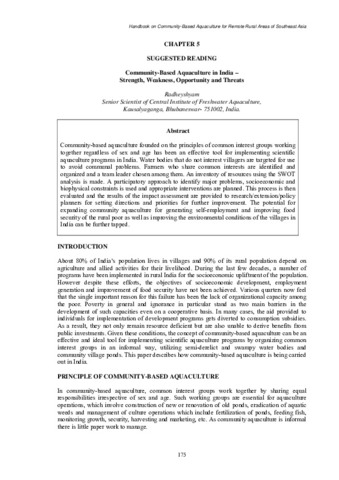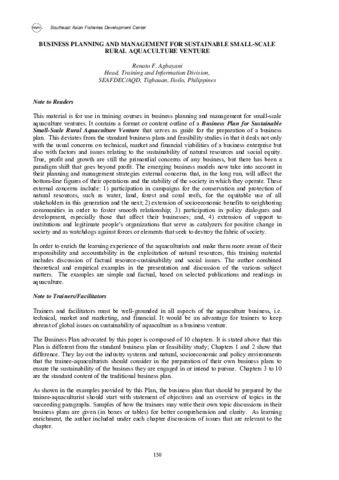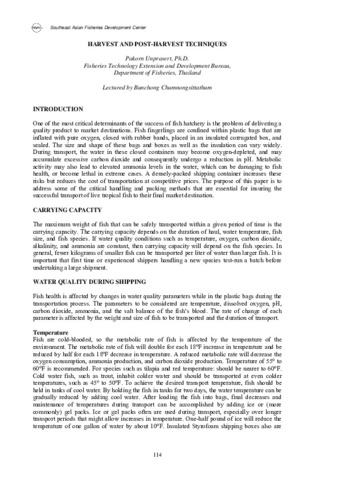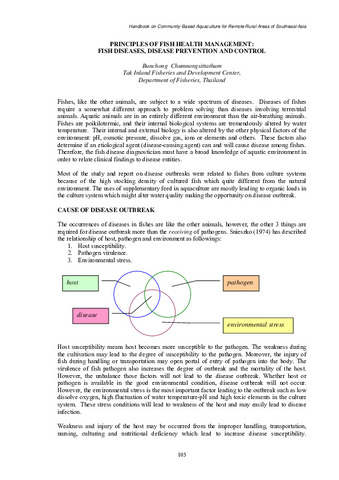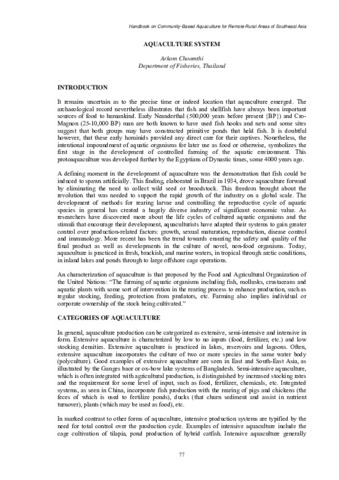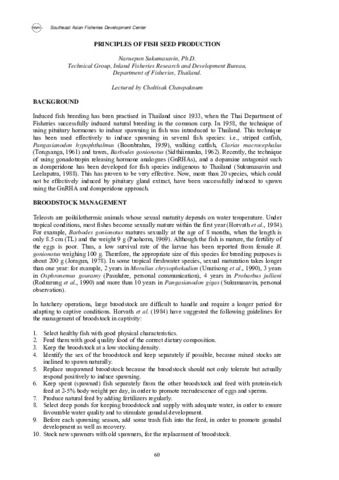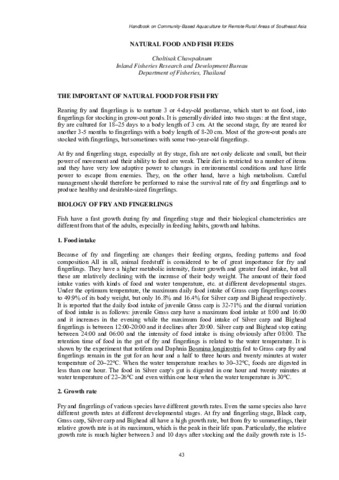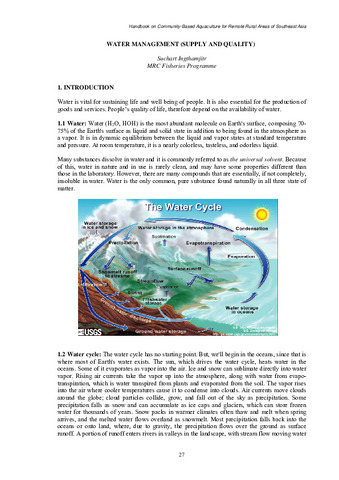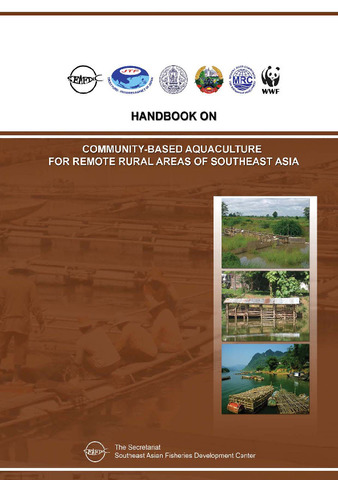02 Technical Publications and Reports on Aquaculture
Browse by
Collections in this community
Recent Submissions
-
Community-based aquaculture in India - strength, weakness, opportunity and threats
(Secretariat, Southeast Asian Fisheries Development Center, 2008)Community-based aquaculture founded on the principles of common interest groups working together regardless of sex and age has been an effective tool for implementing scientific aquaculture programs in India. Water bodies ... -
Business planning and management for sustainable small-scale rural aquaculture venture
(Secretariat, Southeast Asian Fisheries Development Center, 2008)This material is for use in training courses in business planning and management for small-scale aquaculture ventures. It contains a format or content outline of a Business Plan for Sustainable Small-Scale Rural Aquaculture ... -
Technology transfer of aquaculture technologies: Framework and strategies
(Secretariat, Southeast Asian Fisheries Development Center, 2008)All over the world, aquaculture has been the fastest growing food production system for almost two decades now. Aquaculture provides 43% of the fish consumed worldwide (FAO 2006). The growing dependence on aquaculture to ... -
Understanding community-based aquaculture through participatory approaches
(Secretariat, Southeast Asian Fisheries Development Center, 2008)A comprehensive analysis of village conditions will require sufficient time and resources. More often, there is not much time and resources in doing social analysis of the conditions of a community for effective community-based ... -
Community-based aquaculture and resource management: Concepts and approaches
(Secretariat, Southeast Asian Fisheries Development Center, 2008)Poverty characterizes most fishing communities in the Southeast Asian region. In the Philippines, the socioeconomics survey of the National Statistics Office shows that 684,500 or 95.3% of the total 718,267 fishing families ... -
Harvest and post-harvest techniques
(Secretariat, Southeast Asian Fisheries Development Center, 2008)The maximum weight of fish that can be safely transported within a given period of time is the carrying capacity. The carrying capacity depends on the duration of haul, water temperature, fish size, and fish species. If ... -
Principles of fish health management: fish diseases, disease prevention and control
(Secretariat, Southeast Asian Fisheries Development Center, 2008)Fishes, like the other animals, are subject to a wide spectrum of diseases. Diseases of fishes require a somewhat different approach to problem solving than diseases involving terrestrial animals. Aquatic animals are in ... -
Aquaculture system
(Secretariat, Southeast Asian Fisheries Development Center, 2008)A defining moment in the development of aquaculture was the demonstration that fish could be induced to spawn artificially. This finding, elaborated in Brazil in 1934, drove aquaculture forward by eliminating the need to ... -
Principles of fish seed production
(Secretariat, Southeast Asian Fisheries Development Center, 2008)Teleosts are poikilothermic animals whose sexual maturity depends on water temperature. Under tropical conditions, most fishes become sexually mature within the first year (Horvath et al., 1984). For example, Barbodes ... -
Natural food and fish feeds
(Secretariat, Southeast Asian Fisheries Development Center, 2008)Rearing fry and fingerlings is to nurture 3 or 4-day-old postlarvae, which start to eat food, into fingerlings for stocking in grow-out ponds. It is generally divided into two stages: at the first stage, fry are cultured ... -
Water management (supply and quality)
(Secretariat, Southeast Asian Fisheries Development Center, 2008)Water (H2O, HOH) is the most abundant molecule on Earth's surface, composing 70- 75% of the Earth's surface as liquid and solid state in addition to being found in the atmosphere as a vapor. It is in dynamic equilibrium ... -
Principles of fish farm establishment: Site selection, pond/cage design and development
(Secretariat, Southeast Asian Fisheries Development Center, 2008)Fish farming is the principal form of aquaculture. It involves raising fish efficiently in ponds tanks, cages or enclosures, usually for food. A facility that releases juvenile fish into the wild for recreational fishing ... -
Community-based aquaculture for poverty alleviation and sustainable livelihoods
(Secretariat, Southeast Asian Fisheries Development Center, 2008)Fish is a staple food for people in many parts of the world, particularly in Asia. It is an increasingly important source of protein, not only for food security but also as it is a fast renewable resource. Asia is the home ... -
Handbook on community-based aquaculture for remote rural areas of Southeast Asia
(Secretariat, Southeast Asian Fisheries Development Center, 2008)The role of freshwater aquaculture in providing means of livelihood and ensuring sustainable food supply to the people particularly in the remote rural areas of Southeast Asia has become very apparent in the situation where ...

